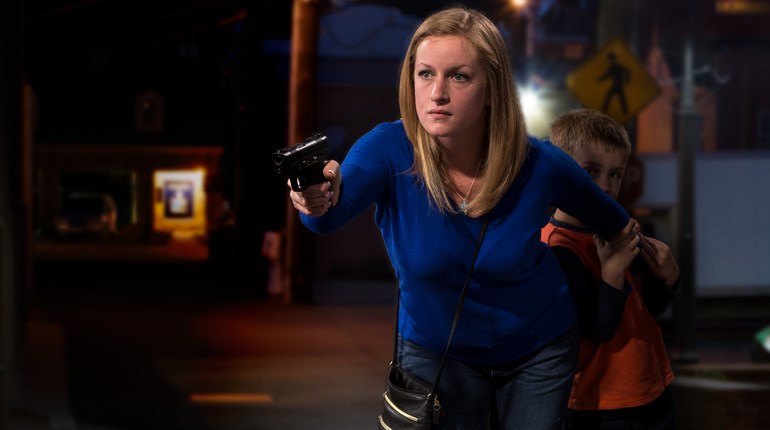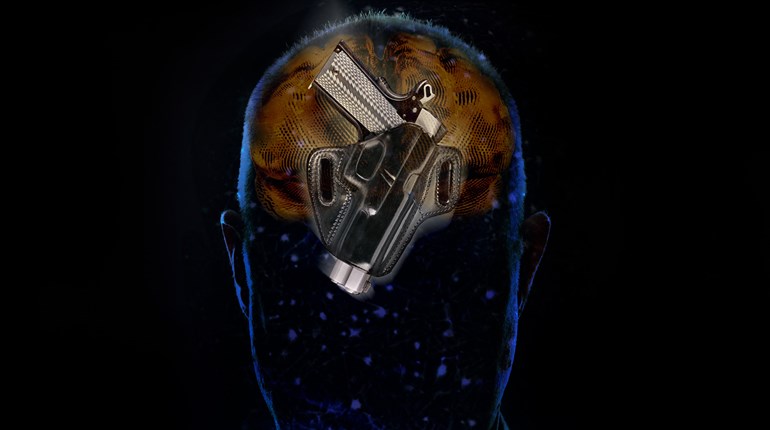
At some point in your training journey, you will face a tough decision—keep practicing what you started with, or expand your capabilities. The idea that you should train for an “average” gunfight is common thinking in many circles. With limited time and resources, it sounds like a good idea to focus on what seems to be happening the most. The problem with this thinking, aside from being intellectually lazy, is what happens when you find yourself outside the averages? I say this all the time: You are preparing for the unknown; an unknowable event. Of course, if you had the details of your gunfight, it would make sense to avoid it in the first place. Focusing only on the averages becomes self-defeating at some point. You either overlook or flat-out ignore many other types of situations.
While your training time and budget may be limited, there is nothing stopping your mind from expanding its boundaries. When you look at your training through this filter, it is easier to see three main training categories or ranges. Simply stated, there is contact range, close range and standoff range. Many cited averages for criminal attacks indicate that they happen within 10 yards, but contact range is basically inside 1 yard and standoff range is outside 10 yards to the maximum effective range of your handgun.
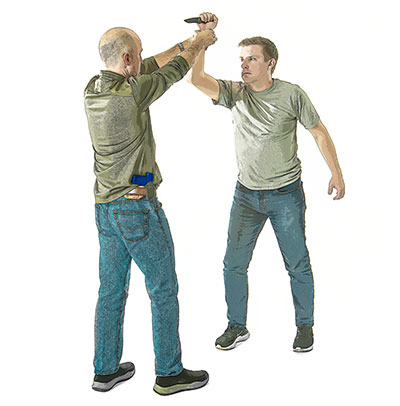
As an instructor, I must balance needs versus wants. It is a delicate balance, almost a dance. I eventually settled on focusing our curriculum on the close-range category. We work extensively from the 3- to 10-yard lines, but we also provide you with some exposure to the contact and standoff ranges. My intention is to plant the seed: these ranges also need your attention. You must find a suitable method for filling these gaps in your preparation. I’d like to cover them in detail, but in our main classes, the focus is on the close ranges. Full transparency, since these programs are marksmanship-centric, we do some work at standoff ranges, mainly the 25-yard line to help diagnose shooter errors. Pushing out to this distance gives us great feedback on the student’s technique. It just so happens that we are addressing one of the categories in the process. Contact range gets discussed in our classes. We conduct demonstrations to help connect the idea with action. It is something I wish we had more time to cover in depth. As a compromise, we provide a stand-alone class to deal with contact range in depth.
When you are contemplating the ideas behind these other categories, how do you justify your time, talent and treasure? The best way to answer that question is to think about getting struck by lightning. The chance of getting struck by lightning is not as remote as we are led to believe. Here is something to ponder: you are 20,000 times more likely to be struck by lightning than win the Mega Millions lottery. Give that a moment to digest. We are talking about a lightning strike. Yet, in the average lifetime, there is a 1:15,300 chance of being struck by lightning. That does make you stop to consider what sort of anti-lightning practice you should develop. Now, you already take precautions against being struck by lightning, but my point is when we use statistics, things can get a bit murky. If you fall into the unlucky bucket of being struck by lightning, it sucks, but the good news is you have a 90-percent chance of surviving. Why all this talk about lightning? Because the statistics are just numbers until you are struck by lightning. The same theory applies to training for averages.
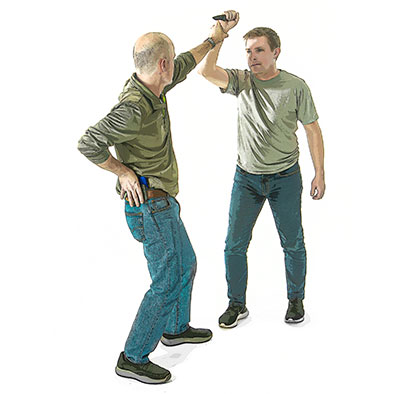
So, what can you do to help avoid falling victim to averages? Acknowledge there are other scenarios that are possible and come up with a plan. The reason we use three categories is to help students recognize they are probably only training for one-third of the types of deadly force encounters out there. It allows them the opportunity to digest the importance of studying for the other two categories. It gives them a reason to open their training plan to include contact and standoff ranges. Then, you are no longer worried about what type of deadly force encounter you might confront. Instead, you know you are prepared to deal with an array of contingencies. I have always preferred the idea of allowing the situation to dictate the response. If you adopt these three categories, you will be far more agile at handling any situation, which puts the odds even more in your favor. Something we impart to our students is you will more than likely be the most trained party in your gunfight, so act accordingly.
What you should focus on is not as hard to process as well. For the contact ranges, we have three areas of study. They are: immediate defense, in-fight gun access and gun retention. Immediate defense is one of the most important skills we cover in our classes. The idea you will have the time to draw your handgun is sometimes misguided. Since by definition the attacker is within contact range or you may already be entangled with the criminal, getting to your handgun may not be your top priority. Instead, you should be focused on protecting yourself from the initial assault, which means the strikes and blows from impact or edged weapons that can deliver enough damage early on to render you combat ineffective. It is not hard to convince people of the importance of establishing control of the attacker’s weapon as fast as possible. One of the best ways to do this is by using a two-on-one scenario, where you place both of your hands on the attacker’s weapon hand, gaining control at the minimum and redirecting the weapon. Even if you have been properly training for a one-handed draw from concealment, that option may not be available, at least initially.
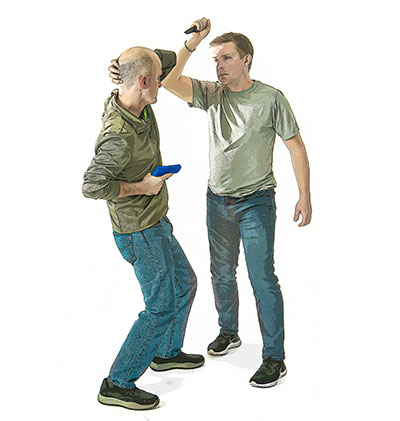
The fight is on once we start fending off our attacker. But, there is usually no clear, hard break in activity that allows for your handgun to be drawn. Instead, you will need to develop the skill to draw while still engaged with the attacker. Gaining access to your handgun doesn’t just mean from concealment, which alone is challenging enough. It might mean gaining access from the ground because you were knocked down, or gaining access while you maintain control of the attacker’s weapon. Most importantly, you must ensure you have the cleanest draw, free from any reflexive grabs the criminal may attempt. Worse is when the attacker recognizes you are attempting to draw a handgun and then interrupts the drawstroke. This can obviously be bad depending on where things are within the fight itself. Guarding your drawstroke is another subject often overlooked in training.
The last area in contact range to consider is gun retention, which is basically keeping control of your own handgun. We certainly do not want to make the situation worse by allowing the criminal to gain access or control over our handgun. We also need to protect the handgun from gun grabs and gun parries. Simply grabbing or deflecting the handgun and thereby directing the muzzle offline or away from their body doesn’t help our situation. Usually, it means the attacker is taking advantage of leverage. When our gun arm is fully extended and the attacker has control over the gun hand or wrist, they have leverage working for them. The gun grab can also lead to malfunctions if the criminal has control or is putting pressure on the slide. While you may still fire the one round in the chamber, subsequent rounds are not available because the slide failed to cycle to the rear to load the next round.
When we extend the range to standoff distances, there are three areas to study as well. Aside from the challenges of shooting at greater distances, these subjects optimize our ability to use distance to our advantage. We want to be able to move and possibly shoot while moving, take advantage of cover or concealment and, if necessary, use different shooting positions. Exposing students to these subjects helps them keep their heads up and look around. Why stand in the open when you can put something—anything—between you and the bad guy? Should you have the misfortune to see the situation deteriorate, but are not able to exit or escape, then movement is valuable. It allows you to either increase the distance or in some rare occasions to close with the bad guy. We want to consider movement before, during and after we draw our handgun, as the situation will be fluid. There may be times when you must shoot while moving, a very challenging skill to develop. Other times, we will need to move to improve our position, such as getting behind something that can stop incoming fire.
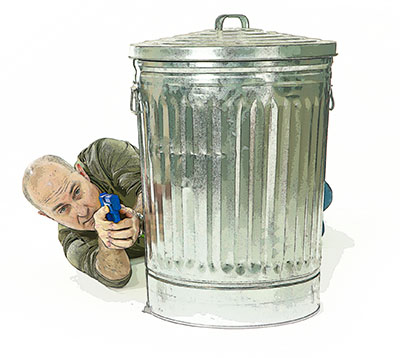
Improving our position means we are taking advantage of our situation. Look to see what is around you that you can use to either protect us from bullets (cover) or hide us from the bad guy (concealment). Under-standing the difference between cover and concealment is important, but in the heat of the moment either one will do if you keep in mind that you are always trying to improve your position. If you only have concealment nearby, take advantage of it now. Then, look for your next piece of cover or concealment. Keep in mind, it may be behind you so don’t be afraid to move backward if it makes sense and is safe. You may need to understand how to shoot from behind cover or concealment, and this will require some knowledge of shooting positions.
Shooting positions are mostly worthless at close range in to contact range, but as soon as you step back, a world of opportunities opens. This comes in the form of the aforementioned cover or concealment. To take advantage of said cover or concealment, you may have to use a shooting position other than standing square to the target. There are plenty of examples where standing will be fine, but low forms of cover such as vehicles may require you to get into a different position. Kneeling and prone are great positions to learn. They allow you to take advantage of the available terrain. If you are left with no ability to move or no cover or concealment nearby, then making yourself a smaller target while being able to return accurate and effective fire is a smart move. Shooting positions also allow us to help stabilize our body, thereby helping us to be more accurate.
The problem with averages is you sometimes lose focus on the bigger picture. Being involved in a deadly force encounter requires you to be able to think on your feet. Training outside the averages helps you come up with solutions you might otherwise have ignored. It starts to round out your game and better prepare you for the unknown. The averages may be alluring; they may provide a degree of comfort. Don’t get comfortable. Realize there is no average gunfight, there is only your ability to react and respond. Looking at deadly force encounters through three lenses helps you stay balanced. You may need to create distance and/or time to draw your handgun. You need to guard your drawstroke to prevent it from being fouled up. If you do manage to draw your gun, you must do everything possible to retain the gun during any close- or contact-range entanglements. As you learn more about standoff range, you recognize you may have to move and shoot while moving. There is the need to look around and locate cover or concealment with the idea you want to move to these locations to improve your position. At these extended ranges, you may need to improve your position by stabilizing your handgun. Remember, averages are great until you find yourself on the wrong end of the Bell Curve. Then what will you do?












